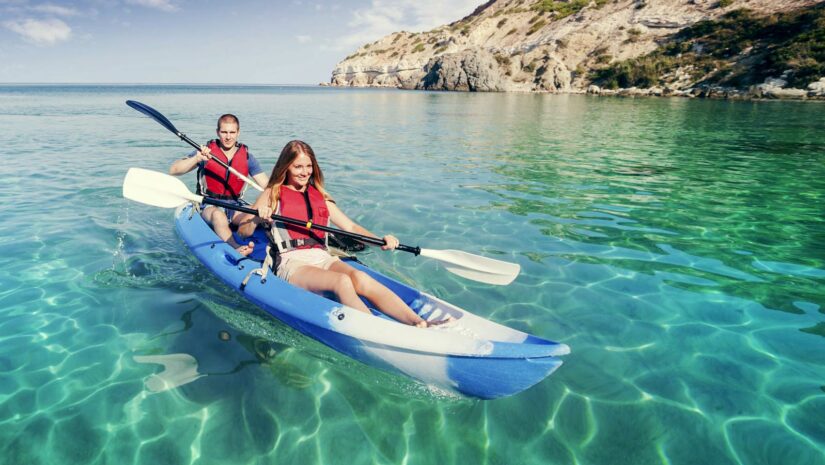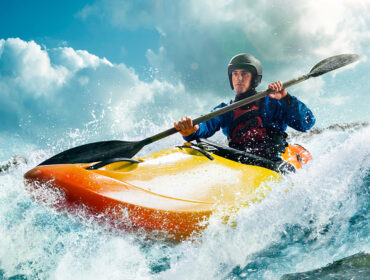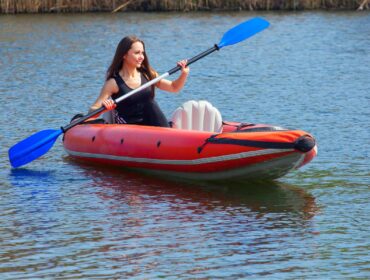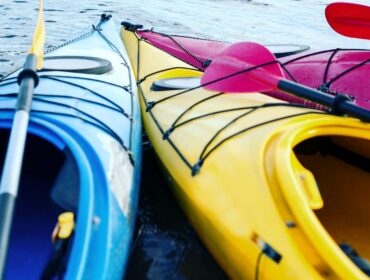Many people don’t know the difference between a kayak and a canoe. After all, they look very similar and involve using a paddle to move the vessel through the water. These similarities are why both terms are often confused and used interchangeably in some parts of the world.
In the UK, kayaks are considered a subtype of canoes, while 19th-century continental European and British canoeing groups used kayak-looking boats and referred to them as “Canadian canoes.” As for most parts of the world, kayaks and canoes have unique differences.
If you’re interested in getting into either of these two paddle sports, knowing how to distinguish one from the other may be helpful.
Kayak vs Canoe

Below, we’ll describe the distinctions and similarities between kayaks and canoes. Regarding the boats’ origins, shape, decks, classifications, the paddler’s positions, the paddles used, and their purposes.
Origin
The oldest canoe ever discovered is the Pesse Canoe, which is believed to date back as early as 8,000 BC. It was a simple dugout in Holland and the oldest boat ever found. Evidence shows that dugout canoes were used in other parts of the world during prehistoric times by Australian natives and Amazon tribes. However, it was in North America that the canoe was developed, which is why traditional open-top canoes are still commonly referred to as Canadian canoes.
Kayaks were developed as hunting boats by the Inuit tribes who resided in areas within what is now known as Canada, Alaska, and Greenland. Made of seal skins stretched over wood or carved whale bones. The earliest kayaks were handmade as a quiet mode of transport for stealthily hunting seals.
Boat Characteristics
Today, both kayaks and canoes are thin and lightweight boats with one or both tips forming a narrow point to help them slice through water easily. This unique design makes them suitable for canoe sprints and kayak racing.
While it’s common to see paddlers in small boats, kayaks, and canoes can come in much longer sizes—depending on how many paddlers the boats were designed to carry. It’s also expected to see very thin kayaks, where racing paddlers only sit on thick paddle boards.
Aside from wood, both types of boats have been made from metal (aluminum), molded plastic (polyethylene), composite materials like fiberglass and Kevlar, and PVC (inflatables).
Paddler’s Position
One of the main differences between kayaks and canoes is related to the paddler’s position in the boat. With canoes, the paddler either kneels (on one or both knees) or sits on a raised seat inside the deck with their knees bent. Solo paddlers find it most comfortable to sit on the bow seat facing the stern (the canoe’s rear).
Alternatively, canoe paddlers can kneel and sit at the same time as half-sitting (on the front edge of the seat). Which can help take the pressure off the legs and create a much more stable position. On the other hand, Kayaks allow paddlers to sit close to the bottom of the boat (also known as the hull) with their legs stretched forward.
To be able to paddle with power and efficiency with reduced body strain, paddlers will also have to sit up straight with their shoulders relaxed and chests pushed outward.
Deck
Their openings, also known as decks, can fit one or several riders and come in two types: open and closed. An open deck offers more room for paddlers, whereas closed decks surround the paddler to keep water out and offer a more secure seat. For example, whitewater kayaking or sea kayaking requires a closed deck and a spray skirt for extra protection.
Since canoes allow paddlers to kneel inside the deck, canoe decks are usually more spacious than that of kayaks. Canoe decks also have a slightly higher seat, which allows the paddler to kneel with their calves tucked underneath it while sitting on the edge of their seat.
Meanwhile, kayaks are designed with a much lower seat and thigh braces to support the paddler’s knees inside the deck. However, a sit-on-top kayak has a deck resembling a canoe, designed with a more open top and a higher seat.
Classification
The boats are classified by letters and numbers. The letter goes first and refers to the type of boat (C or K), and the following single-digit number refers to the number of paddlers in the boat. For example, a typical canoe accommodating a solo rider is classified as C1, while a tandem canoe (two paddlers) would be classified as C2. The same concept applies to kayaks, but generally, they are used with fewer people than canoes.
It’s also important to note that the type of boat deck can alter the boat’s classification. An open-decked canoe with one paddler would be classified as OC1, while a closed-deck canoe would be classified as C1.
Paddle
Another main difference between these small boats is the paddle accessory. A canoe only uses a single-blade paddle with a T-shaped handle at the end of the shaft for a more comfortable grip while water paddling once on each side of the canoe. On the other hand, kayaking paddles are long, double-bladed paddles used to row on both sides of the kayak without switching sides.
Purpose
Canoes are widely used for leisure paddling with family (and even kids) on calm waters and for transporting gear. Kayaks are known to be much faster than canoes, which makes them the ideal choice for competitive water sports.
Nonetheless, you’ll find that many paddlers use both types of boats for different kinds of exciting activities and water sports like recreational or professional whitewater paddling and boat racing, as well as for fishing, exercise, and transport or travel.
Which One Should I Use?
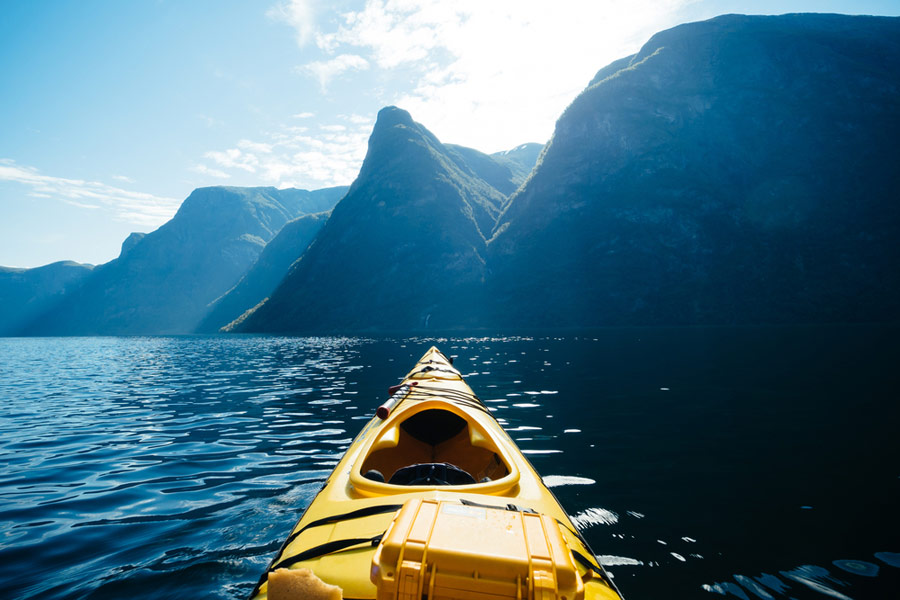
If you’re going camping, fishing, or even diving with your family and friends, a canoe is traditionally more extensive and more accommodating for multiple paddlers and their gear. It’s also much easier to get the hang of those canoeing paddles. Especially when two or more of you are paddling simultaneously. Then again, its size makes it less portable than kayaks unless you opt for an inflatable canoe.
But suppose you’re mainly after the experience of rowing on more difficult waters for sports or recreation and don’t mind learning the proper kayak paddling techniques. In that case, you’re better off choosing from the many types of kayaks available on the market (including an inflatable option!).
Water activities will always be safer and ultimately more enjoyable when you choose the right equipment. Therefore, make sure to consider your purpose and preferences when selecting a kayak or canoe for your impending water adventures.
Good luck!

